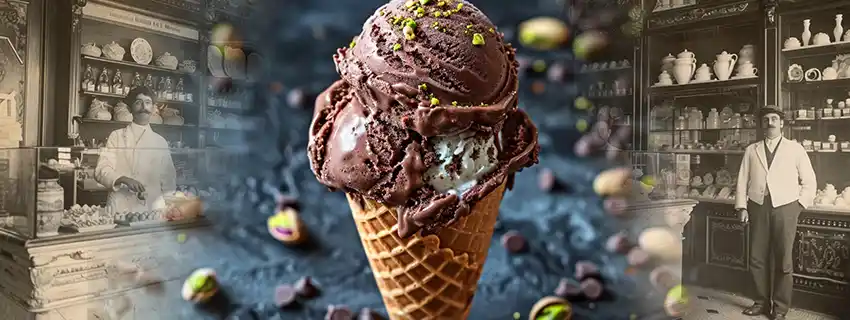Published:
Author: Antonio Maria Guerra
How Is Gelato Made?
Although ice cream is one of the most reknown and appreciated specialties worldwide, very few people know how its finest type, the ‘artisanal ice cream’, is made. In this article, we will explain the required steps to produce this icy delicacy, starting with the selection of its top-quality ingredients.

How is gelato made?
At first glance, the preparation of ice cream might seem quite simple: nothing could be more wrong since this icy specialty, to achieve optimal quality, requires scientific skills, expertise and, above all, great sensitivity. These fundamental characteristics can be acquired only after long years of experience. Hard work and self-sacrifice are therefore of paramount importance for ice cream makers, true ‘artisans of taste’.
Here follows a list of the steps generally followed in modern days to make ‘artisanal’ ice cream.

01. Selection: It all starts with the selection of the ingredients needed for the base mixture. The main ones are fresh whole milk, heavy cream and sugar: they are used for the ‘white base’, characterized by lightness and delicacy of taste. The ‘yellow base’ requires the further addition of egg yolks and is distinguished by a thicker texture and stronger flavor.

02. Mixing: The ingredients are mixed together. They are added one after the other, starting with liquid ones (the milk), then moving on to centrifuged cream, eggs (eventually) and finally sugars (sucrose, dextrose) (*1). Needless to say that their quality is of paramount importance.

03. Pasteurization: The mixture is pasteurized heating it to a temperature of about 85° for 2 to 3 minutes. This treatment eliminates undesired bacteria and enzymes without affecting the taste. This phase is followed by a quick cooling (‘chilling’) to about 4°.

04. Maturation: The mixture is kept at a temperature of 4° and allowed to rest, on average, between four and 12 hours, thus achieving a perfect amalgamation of the ingredients (this is a process, mutatis mutandis, not too dissimilar to that of leavening, which obviously concerns flour products).

05. Creaming: At this stage, the ice cream, from a semi-liquid substance, gradually hardens into a paste. This happens for the progressive cooling that causes the water contained in the mixture to freeze. The simultaneous mechanical action exerted by the rotating fins of the creaming machine, makes the mixture to incorporate air, gaining softness and uniformity of taste.

06. Addition of the ‘characterizing’ flavor: The addition of the flavor that will characterize the ice cream, also known ‘characterizer’ (such as, for example, vanilla, chocolate, etc.), generally takes place during or near the end of the creaming process. Some artisans prefer to do this a little earlier, enriching the semi-liquid base.
Marketing: when the creaming process is finished, the specialty has a temperature around -10°C and is ready to be placed in the refrigerated displays in order to be sold. Some makers, before marketing, prefer to lower its temperature further (‘hardening’).
Notes:
*1: Milk powder or a little flour (as a thickener) can also be added;
Let’s find out the fascinating origins of Italian gelato, a lot of informations and many interesting facts. To read the article please click on this LINK.
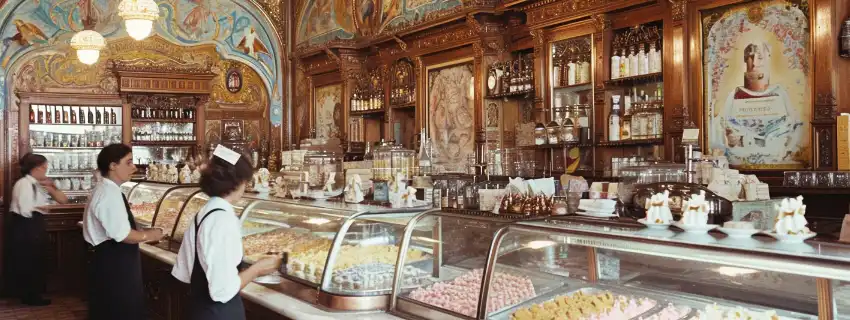
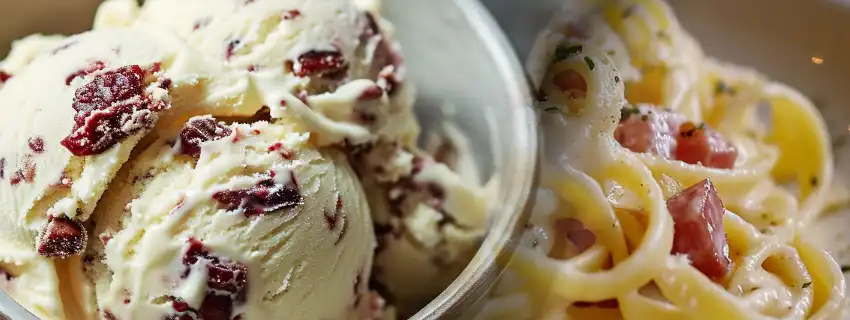
Crazy flavors for ice cream.
After learning about the production method, it’s easy to understand that ice cream is a specialty that, like pizza, lends itself to many possible variants, both sweet and savory, closely linked to the fantasy and sensibility of the artisan making it. It should not therefore surprise that, over time, master ice cream makers have created very peculiar delicacies such as, for example, wasabi ice cream, mortadella ice cream, carbonara ice cream, and even ice cream with tuna and onion!
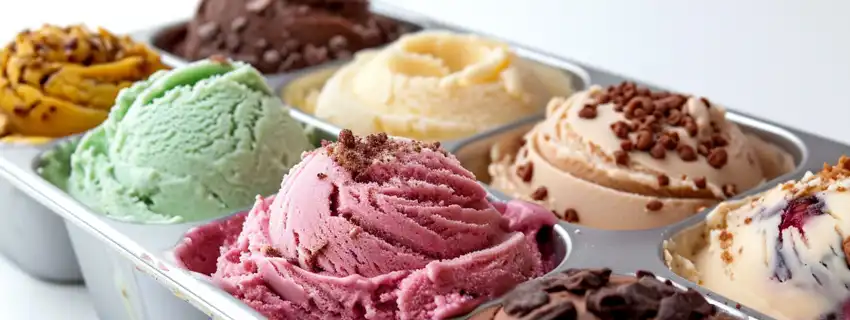
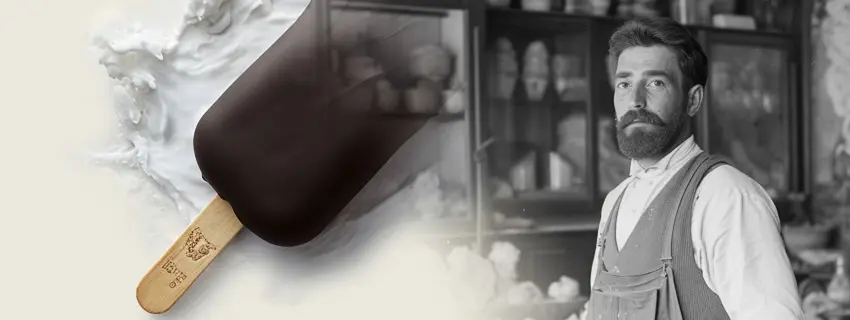
Pepino’s ‘Pinguino’.
In 1884, a Neapolitan-born ice cream maker, Domenico Pepino, founded an ice cream shop in Turin. Thanks to the quality of its product, his store, which is still in business today, immediately achieved great success, so much so that it became the official supplier to the Italian Royal House of Savoy.
Continua
Among Pepino’s most famous delicacies, it’s important to remember the ‘Pinguino’: an ice cream covered with a thin layer of crunchy chocolate, considered by some to be the first ice cream stick in the world. Other experts argue that the record should be assigned to the U.S. Eskimo Pie.

How is gelato made? Air in the ice cream.
Strange as it may seem, air, an odorless, invisible and intangible element, plays a fundamental role in the quality of ice cream. Its insertion into the specialty occurs during the step of its preparation known as ‘creaming’. At this stage, the product is agitated continuously thanks to the rotating paddles of the creaming machine: the quantity of the air added depends on the velocity of these paddles.
The amount of air present in an ice cream has a decisive influence on its characteristics, the main ones being:
Texture and solidity: the right amount of air makes ice cream soft and lighter, causing the ice crystals inside it to stay small, thus finer and more palatable. It goes without saying that an excess of air would lead to an unpleasant ‘porosity’ of the product.
Volume: larger or smaller doses of air inside the ice cream lead to a variation of its volume (with the same amount of ingredients used).
Conservation: air, by counteracting the formation of ice crystals, ensures a better preservation of ice cream: thanks to it, the specialty retains its softness even when kept for a long time at a low temperature in a freezer.
Uniformity in taste: the air inside ice cream leads to a more uniform distribution of flavor. This helps to increase the balance and pleasantness of the product.

Guinness ice creams.
Over time, ice cream has become the protagonist of many Guinness World Records. Among the most interesting ones it’s interesting to mention, for example, that of the biggest ice cream in the world, achieved by a cone prepared at SIGEP (the international ice cream exhibition) in 2011: 2.81 meters high, it weighed more than 700 kilograms!
Another peculiar record is that of Dimitri Panciera, who, in July 2022, managed to arrange as many as 155 scoops of strawberry ice cream on a single maxi-cone.

Copyright information.
The images displayed in this page belong to WebFoodCulture.

